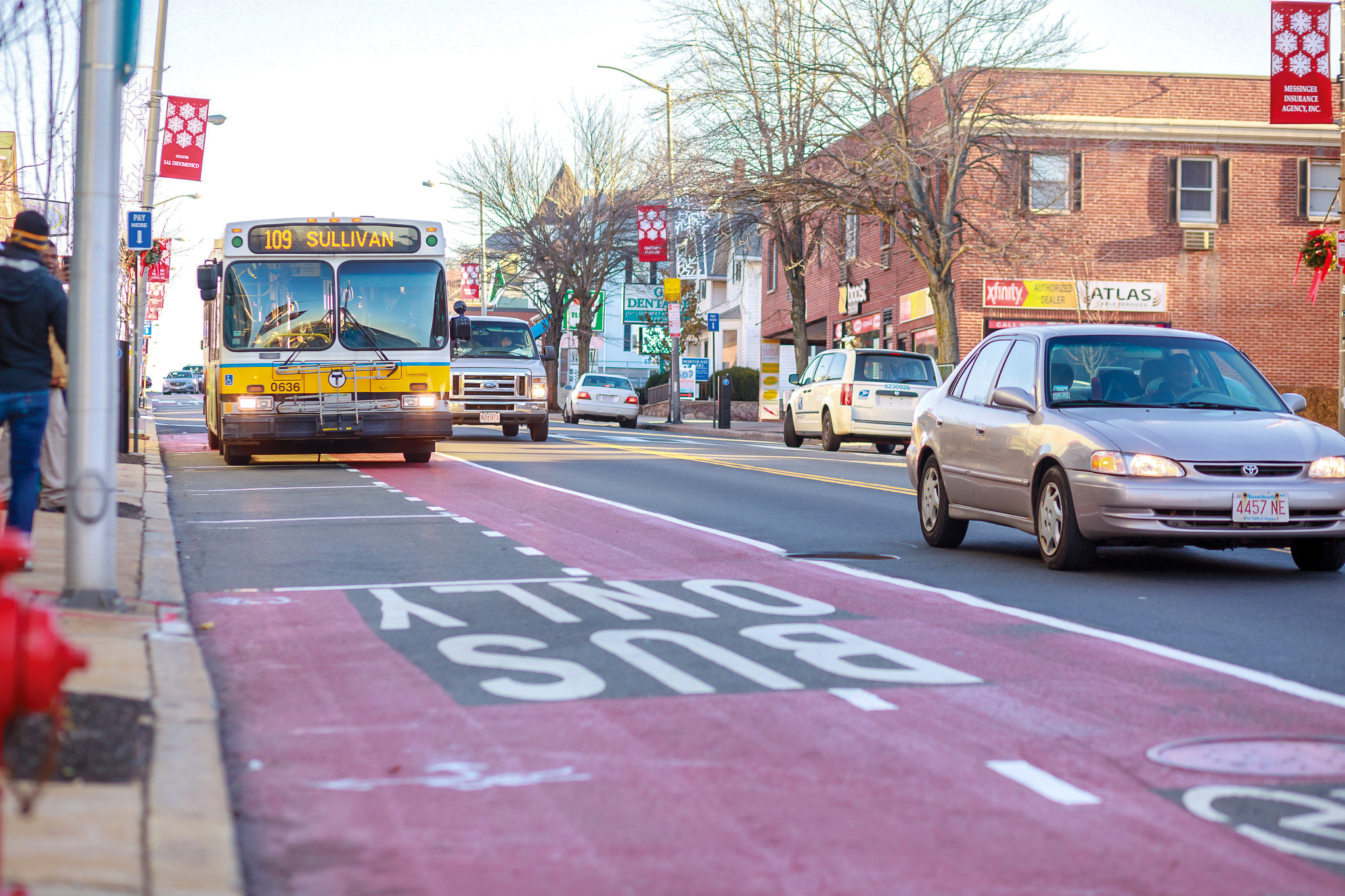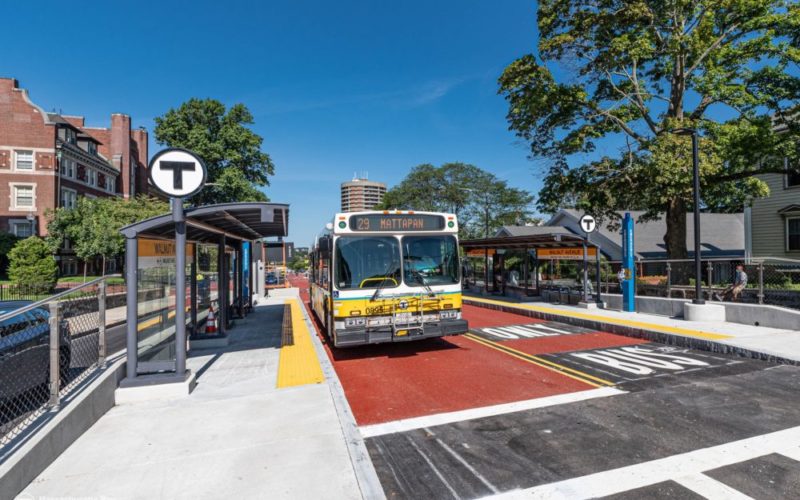
Legalize it. (Photo: Aimee Custis)
The Manual on Uniform Traffic Control Devices may be an obscure document, but its impact on our lives is everywhere you look.
The MUTCD is federally-approved guidance for traffic engineering, a standard reference for the people who design American streets. Its contents can either accelerate or obstruct the creation of streets where transit runs unimpeded by car traffic, and where people can safely get to transit stops on foot, by bike, or in a wheelchair.
Updates of the MUTCD are infrequent — a new version comes out about once per decade — so each release is a pivotal moment for the future of American streets and transportation. There are a few more days for the public to weigh in on the next version: Comments on a draft update of the MUTCD, released last December, are due this Friday, May 14.
After reviewing the draft, TransitCenter aligns with the overarching critique by the National Association of City Transportation Officials, which found that it “introduces new barriers to implementing environmentally responsible bicycle and transit infrastructure, and would do little to fix the inequities that previous editions helped entrench.” We join NACTO, Transportation for America, America Walks, and other advocates in calling for substantive changes.
Without a rewrite, this version of the MUTCD threatens to set back efforts to prioritize transit and create safer walking conditions. Fixing these shortcomings will be critical to achieving the Biden administration’s climate and equity goals in the transportation system.
We are submitting comments to the Federal Highway Administration outlining the major changes we’d like to see, and we urge other transit advocates to do the same.
Of particular concern for transit riders are sections of the MUTCD that deal with bus lanes. The draft manual includes mandates that would limit the use of red bus lanes and make them more costly and time-consuming to implement. Specifically, it would prohibit the use of red pavement for transit lanes that are part-time, allow pick-ups and drop-offs, or allow motorists to make right turns. It would also require an engineering study prior to implementing red bus lanes. And if a city does opt to use red pavement, the draft would require the entire width of the bus lane to be red, even though cities have had success marking a smaller portion of the bus lane in red.
Because cities rely on federal funds for most transit priority projects, and the release of federal grant funding is predicated on adherence to the MUTCD, compliance with these unnecessary mandates would be a prerequisite for cities to move forward with red bus lanes. The MUTCD rules would be a drag on improving bus service, instead of giving cities the freedom and flexibility to quickly prioritize transit on the street.
We recommend that the draft manual be revised to allow cities to implement red bus lanes without an engineering study, and with the flexibility to apply red markings in line with local design consideration.
TransitCenter also aligns with NACTO’s position on the draft manual’s guidance on speed limits, warrants for pedestrian crossings, bike lane design, and autonomous vehicle safety standards.
The public can submit comments on the draft MUTCD through May 14. TransitCenter submits the following recommendations, and we encourage transit agencies and advocacy organizations to adapt from this language and the NACTO/Transportation for America letter template to FHWA.
Red pavement markings are a proven tool to improve compliance with bus lanes and increase bus speeds. The draft MUTCD includes restrictions on the application of red bus lanes that will be detrimental to transit performance and transit riders, impeding efforts to make transportation systems more equitable and curb greenhouse gas emissions. Our organization recommends these revisions to section 3H.07 in the draft manual:
- Remove the requirement for an engineering study prior to implementation of red bus lanes. Instead, enumerate the benefits of red bus lanes to transit performance.
- Remove the stipulation that red pavement cannot be used for bus lanes that are part-time, allow pick-ups and drop-offs, or allow motorists to make right turns.
- Remove the mandate for red bus lane markings to be applied across the full width of the lane, and provide engineers with the flexibility to apply red bus lane markings in accordance with local design considerations.
 Announcing the 2021 Frequency Award Winners!
Announcing the 2021 Frequency Award Winners!
TransitCenter’s annual Frequency Awards recognize outstanding work in the transit field. Here are the 2021 honorees...
Read More A Bus Agenda for New York City Mayor Eric Adams
A Bus Agenda for New York City Mayor Eric Adams
To create the “state-of-the-art bus transit system” of his campaign platform, Mayor Adams will have to both expand the quantity and improve the quality of bus lanes. We recommend these strategies to get it done.
Read More